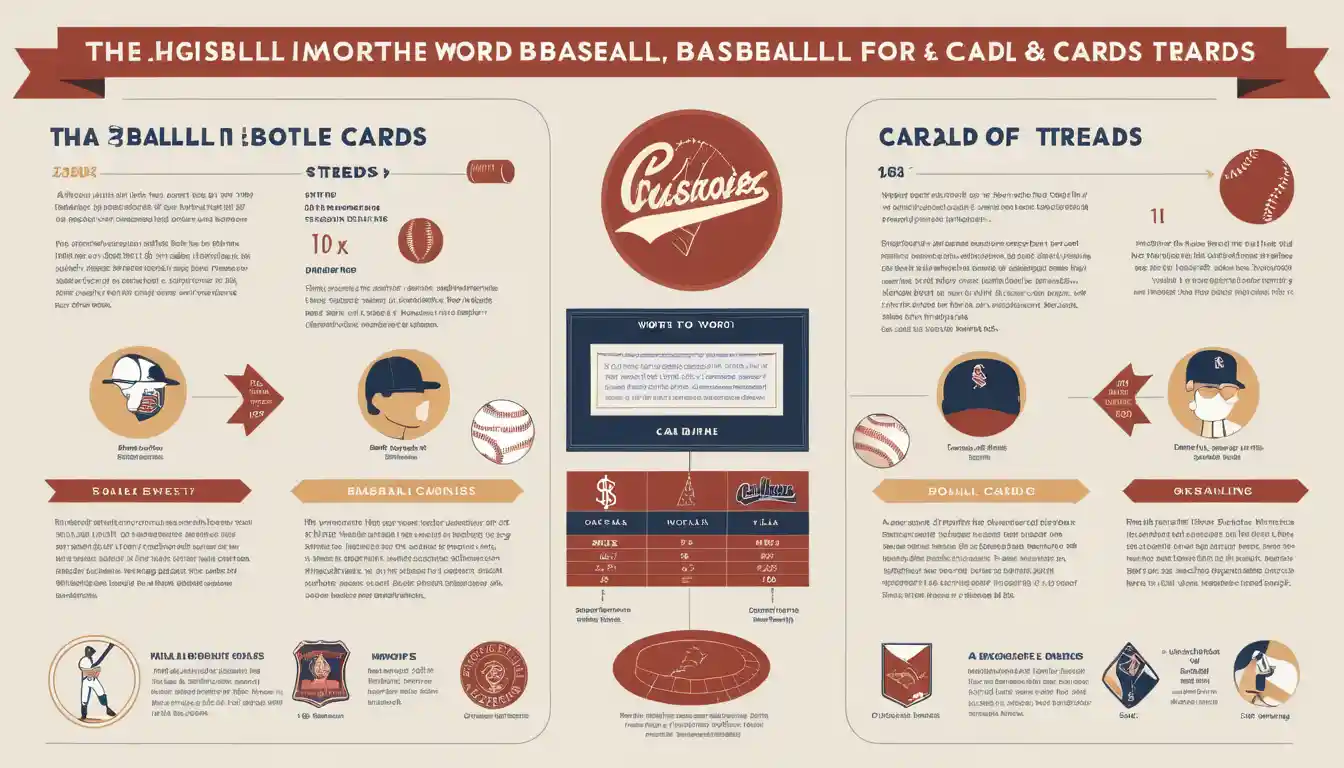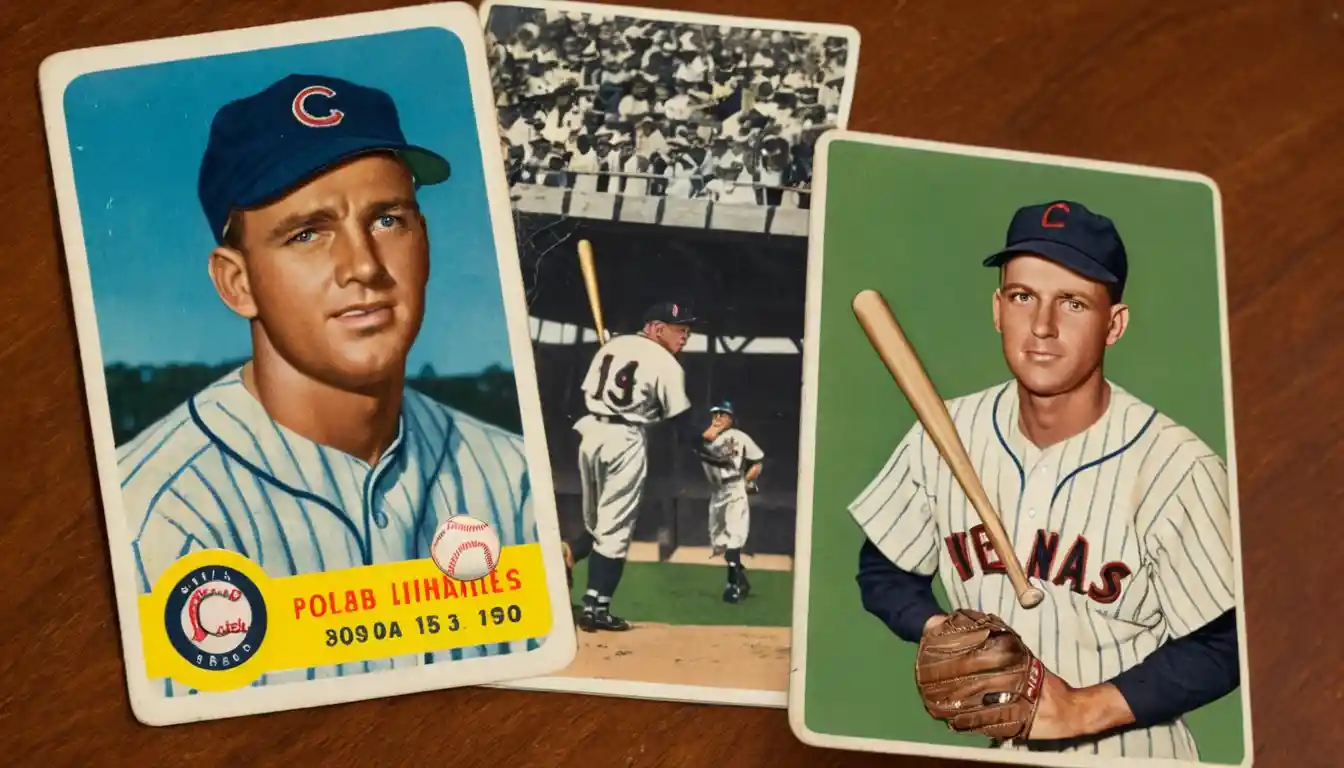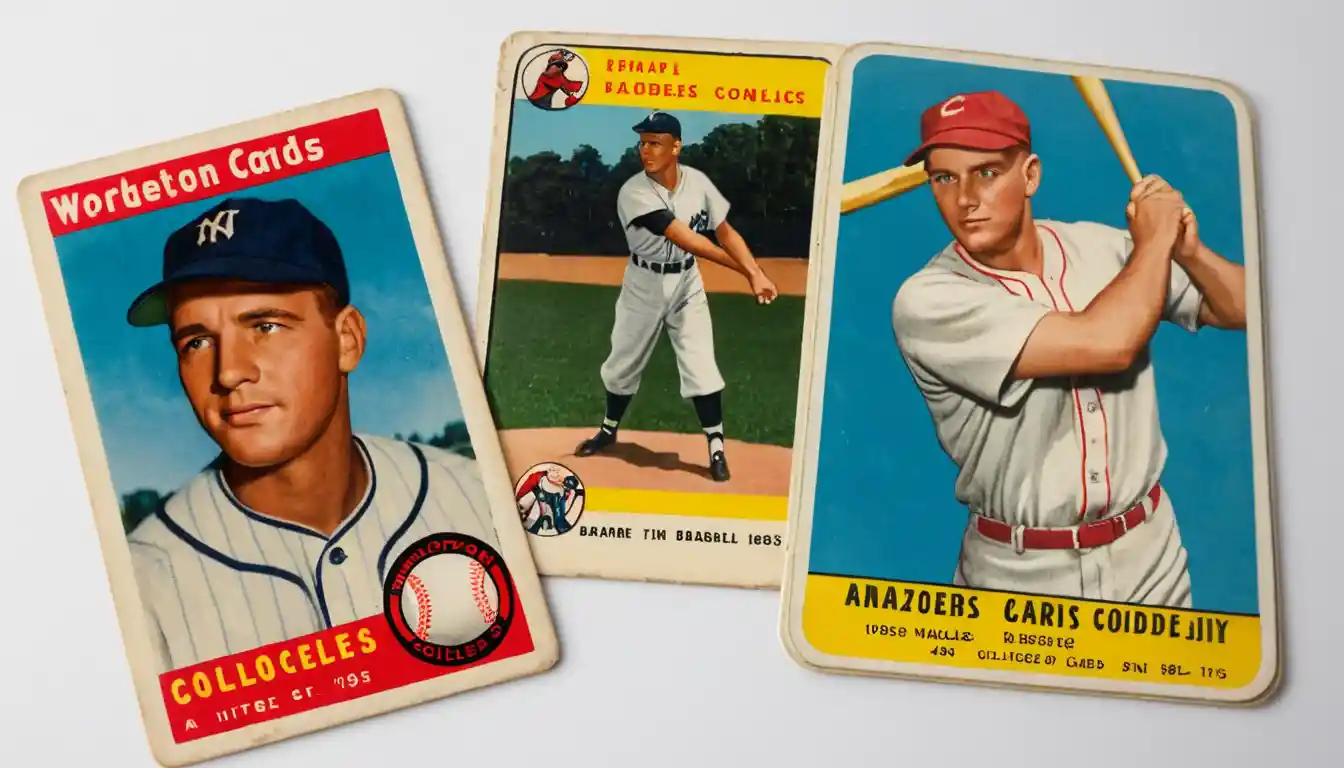If you’ve ever rummaged through your attic or dug through boxes in search of baseball cards, you’re not alone. Whether you’re a seasoned collector or just getting started, one burning question stands out: what are baseball cards worth? The answer is far from simple. Baseball card values can range from a few cents to millions of dollars, depending on various factors. But how can you tell where your cards stand on that spectrum? This guide breaks down the key elements that affect baseball card values, helping you get a clearer idea of what your baseball cards are worth.
Understanding the Factors That Influence Baseball Card Worth
Before you dive into appraising your collection, it’s crucial to understand the factors that determine what are baseball cards worth. These elements include:
1. Rarity
Rarity plays a significant role in the value of baseball cards. The fewer copies of a card available, the more valuable it becomes. This is why certain limited-edition cards, especially rookie cards or error cards, can fetch astronomical prices. For instance, the 1952 Mickey Mantle rookie card is one of the most valuable baseball cards in history, mainly due to its rarity.
2. Condition
The condition of a baseball card is critical to its value. Cards are graded on a scale from 1 to 10, with 10 being “Gem Mint” condition. Cards with sharp corners, clear images, and no creases will command the highest prices. A card in poor condition, like one with tears or faded ink, will be worth much less.
3. Player’s Popularity
The value of a card can also depend on the player featured. Cards of legendary players like Babe Ruth, Willie Mays, or Hank Aaron often carry higher values. Similarly, a rookie card of a current star like Mike Trout or Shohei Ohtani could be highly sought after due to the player’s potential.
4. Age of the Card
While newer cards can be valuable, especially limited-edition ones, vintage cards (those from the early 1900s or 1950s and 1960s) tend to have higher value. The age of the card often adds to its rarity and historical significance.
5. Card Manufacturer
The brand that produces the card also impacts its worth. For instance, cards from Topps, Upper Deck, or Fleer are often more valuable than those from lesser-known companies, especially if they have a good reputation for quality.
Grading: The Key to Determining Card Value
When you’re asking what are baseball cards worth, grading is often the first step in determining value. A reputable grading service, like PSA (Professional Sports Authenticator) or Beckett Grading Services (BGS), will examine your card’s condition and assign it a grade.
Here’s a brief breakdown of common grades:
Gem Mint (10): Perfect condition, sharp corners, no surface wear.
Mint (9): Nearly perfect with minor flaws.
Near Mint (8): Some slight wear visible on corners or edges.
Excellent (7-5): Some visible flaws, like small creases or discoloration.
Good (4-1): Noticeable wear, including significant creases, fraying edges, or fading.
A higher-grade card will generally have a higher value. For example, a PSA 10 graded 1989 Ken Griffey Jr. rookie card can sell for thousands of dollars, while a PSA 7 might only fetch a fraction of that price.
Popular Baseball Cards and Their Value
Now that you have an understanding of the factors that influence value, let’s take a look at some famous cards and what they are worth.

1. 1952 Topps Mickey Mantle
This is widely considered one of the most iconic baseball cards in history. In mint condition, the card has sold for over $5 million. Even in lower grades, it can still fetch a substantial price. The 1952 Mickey Mantle card is a prime example of a rare and valuable piece of sports memorabilia.
2. 1989 Upper Deck Ken Griffey Jr. Rookie Card
Ken Griffey Jr.’s rookie card has been one of the most popular and valuable cards in recent decades. In Gem Mint condition, this card can fetch upwards of $20,000. This card’s value is attributed to Griffey’s legendary career and the fact that it’s one of the first rookie cards produced by Upper Deck, a brand that revolutionized the baseball card industry.
3. 1914 Baltimore News Babe Ruth Rookie Card
This card is extremely rare and highly valuable, with a well-preserved copy selling for over $4 million at auction. As one of the earliest known Babe Ruth cards, it represents both baseball history and rarity, making it an extremely sought-after item.
4. 2009 Bowman Chrome Draft Mike Trout Rookie Card
Mike Trout’s rookie card is one of the most valuable modern baseball cards. The 2009 Bowman Chrome Draft card has sold for as much as $3.9 million, thanks to Trout’s ongoing career as one of the most talented players in baseball today. It’s an example of how a player’s success on the field can significantly impact what their baseball cards are worth.
How to Evaluate Your Baseball Cards
If you’re wondering what are baseball cards worth in your collection, here are some steps you can follow to evaluate them:
1. Examine the Condition
Start by inspecting the physical condition of the card. Look for any creases, scratches, or fading. If the card is damaged, it will likely be worth much less. If it’s in good condition, you’re on the right track for a higher value.
2. Check for Rarity
Is your card a limited edition or a rookie card? Look for any indication that the card is rare or hard to find. Cards with printing errors or misprints can also be valuable due to their rarity.
3. Research Recent Sales
To get an idea of what your baseball cards are worth, check online auction sites like eBay to see how similar cards have been selling. Look for cards with similar conditions, years, and players to get a rough estimate.
4. Get Your Cards Graded
If you have a valuable card, consider sending it to a professional grading service. A high-grade card can significantly increase in value. Grading services can also authenticate your cards, which can boost buyer confidence if you plan to sell.
Selling Your Baseball Cards: Where to Start
If you’re ready to part with your collection, you have a few options for selling:
1. Online Auctions
Websites like eBay, Heritage Auctions, and PWCC Marketplace offer a wide platform to sell cards to collectors around the world. Online auctions can help you reach a global audience, and prices tend to be competitive.
2. Local Card Shops
Some local baseball card shops may be interested in purchasing your cards. While this option may not fetch the highest price, it’s a quick and easy way to sell your collection.
3. Private Sales
If you have a particularly rare card, you might want to look for a private buyer who specializes in high-end sports memorabilia. Private sales can often result in better prices, but they require more effort to find potential buyers.
How to Preserve Your Baseball Cards
To ensure that your cards hold their value, it’s important to take proper care of them. Here are some tips to help you preserve your collection:

Store in Protective Sleeves: Use high-quality plastic sleeves or top loaders to protect your cards from physical damage.
Keep Them in a Cool, Dry Place: Avoid storing cards in places with extreme temperatures or humidity, as this can lead to warping or fading.
Avoid Handling: Handle cards as little as possible to prevent oils from your skin from damaging the surface.
Frequently Asked Questions
What factors affect the value of baseball cards?
The value of baseball cards is influenced by several key factors, including rarity, condition, the popularity of the player featured, the card’s age, and the manufacturer. Rare cards, especially limited editions or rookie cards, tend to have higher value. Cards in excellent condition with minimal wear also command higher prices. Additionally, a player’s career success and historical significance can play a major role in determining the value of their cards.
How can I determine the value of my baseball cards?
To determine the value of your baseball cards, you should start by assessing their condition and rarity. You can then research recent sales of similar cards on online auction sites like eBay. Professional grading services like PSA or Beckett can also help assess the condition and authenticity of your cards, potentially increasing their value. Comparing your cards to others with similar features will give you a better idea of their worth.
Why is the condition of a baseball card so important?
The condition of a baseball card is crucial because it directly impacts its market value. Cards are graded based on factors like corners, edges, surface wear, and centering. The better the condition, the higher the value. Cards in pristine, gem mint condition often sell for much more than those with creases, discoloration, or other damage.
Should I have my baseball cards graded?
If you have rare or valuable cards, it’s a good idea to have them graded by a professional service like PSA or Beckett. Grading can provide an official condition report, which can increase the card’s value and buyer confidence. High-grade cards tend to sell for much higher prices, so grading can be a worthwhile investment if you’re looking to sell or insure your collection.
Where can I sell my baseball cards?
There are various platforms where you can sell your baseball cards, including online auction sites like eBay and Heritage Auctions. Local card shops may also purchase cards, although they might not offer as high a price. For rare and high-value cards, private sales or specialized dealers in sports memorabilia may be the best option.
Final Thoughts
Ultimately, the value of your baseball cards depends on several factors, including rarity, condition, player popularity, and age. Whether you’re looking to sell or simply want to know what your baseball cards are worth, the key is to do thorough research, preserve your cards well, and consult experts when needed.
So, the next time you’re looking at your collection and wondering what are baseball cards worth, remember that it’s not just about the card’s price tag, it’s about the history, the players, and the memories that make these cards so special. Start evaluating your collection today, and you might just find a hidden gem.





